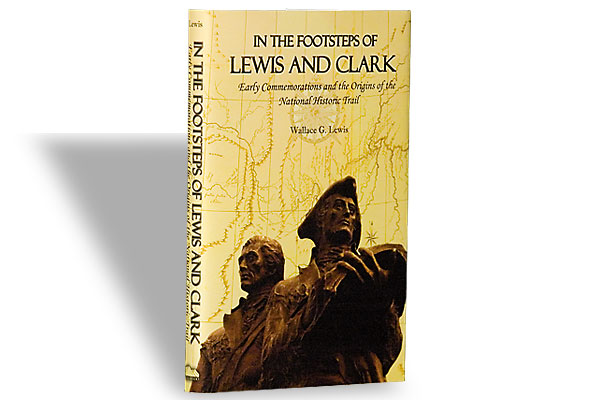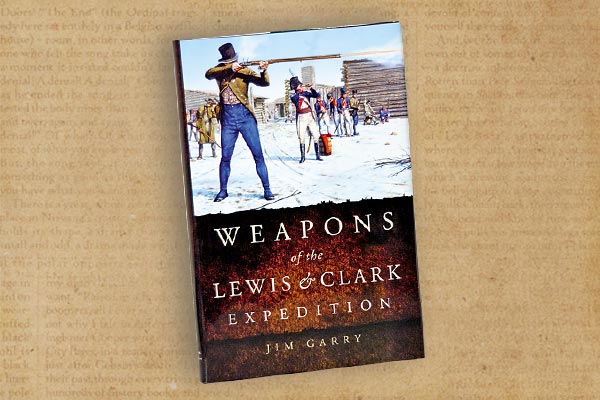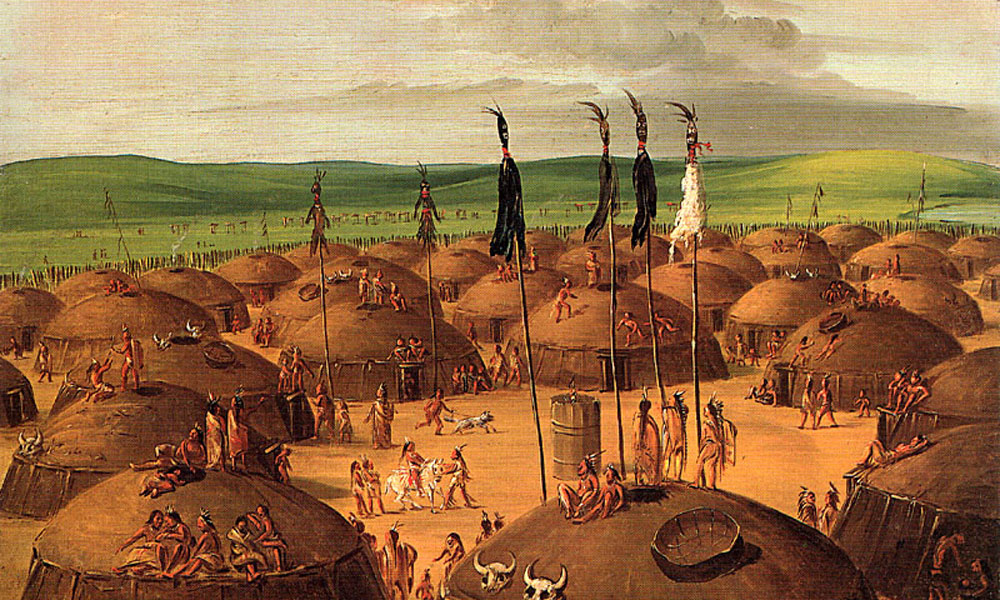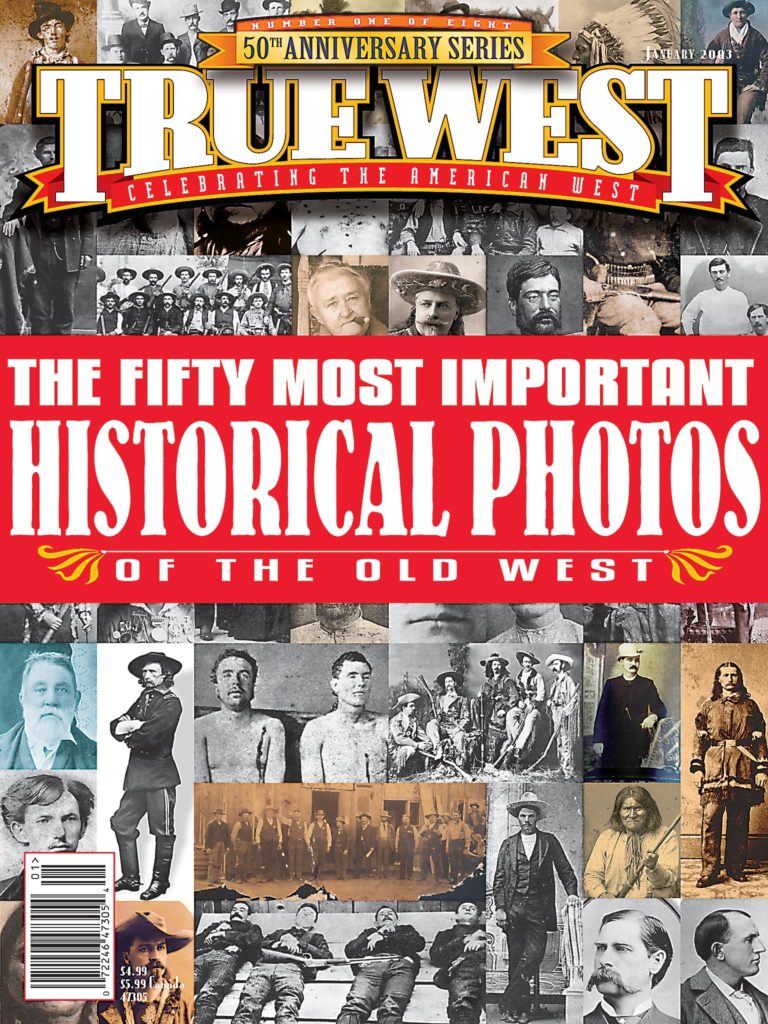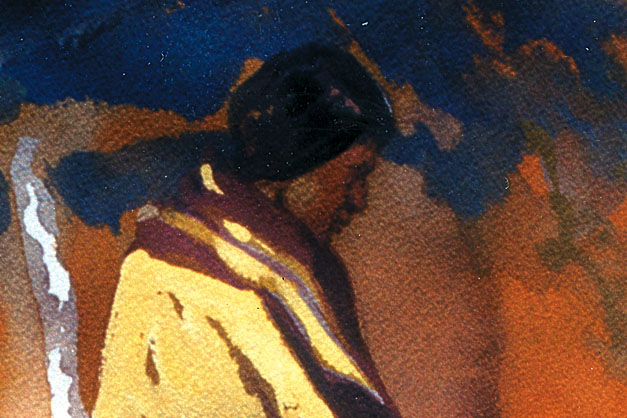 Lewis and Clark didn’t name a single landmark to commemorate their teenage interpreter, Sacagawea.
Lewis and Clark didn’t name a single landmark to commemorate their teenage interpreter, Sacagawea.
They did honor her with “Bird Woman River,” apparently thinking the white translation of her difficult name—spelled many ways, both in their journals and today—would be memorable when her native name wasn’t.
They would no doubt be astonished to discover today that her real name is as famous as theirs, and adorns scores of items, including parks and a massive lake that covers the land of the friendly tribes who helped the explorers survive a nasty North Dakota winter. Novels about her—some making incredible claims—outsell books about the expedition itself.
In real life, Sacagawea didn’t fare any better when it came to a payday. Her French-Canadian husband, Toussiant Charbonneau—who cinched his interpreter job because she knew her native Shoshoni language—was paid $500.33. She received not a penny. At least Clark apologized for this slight in a letter to Charbonneau on August 20, 1806—well, sort of: “your woman who accompanied you that long dangerous and fatiguing rout to the Pacific Ocean and back deserved a greater reward for her attention and services on that rout than we had in power to give her.” Wouldn’t he be shocked today to see her face on a dollar coin, officially issued by the United States of America?
To Lewis, she was little more than “the Indian woman” who came with Charbonneau, although he did help birth her son. Clark saw more, calling her “Janey,” acknowledging her contributions to the trip and eventually educating her son in St. Louis. (An affair between Clark and Sacagawea is probably myth, although the idea of one made it into a bestseller.)
Neither Lewis nor Clark realized one of the enduring legacies of their Voyage of Discovery was to make this teenager one of the most famous women in America. They would never have guessed more statues would be erected to her than any other woman of any color. Nor could they have guessed they’d given her a special status when they made her the first American woman having the right to vote. (OK, so it was only once and just on where to locate a winter fort, but her sisters wouldn’t get the privilege for another century, so it’s worth noting.)
Folklore and movies have made her out to be more than she was. She wasn’t “THE guide” of the expedition, as some have claimed—most of the landscape she saw was as new to her as it was to Lewis and Clark—but she did help when it really mattered, in the mountains of Montana and Idaho when she came into the Shoshoni land of her birth.
It was there that one of the unadulterated joys of the entire expedition was experienced—one glorious moment in a thousand days of hardship. It is such an incredible moment that historian and filmmaker Dayton Duncan calls it, “coincidence that would strain credulity in a fictional account.”
Crossing the Continental Divide
By late July 1805, the Corps of Discovery had surmounted the Great Falls of the Missouri (near Great Falls, Montana), and reached the Three Forks, where the party rested for two days. Although Sacagawea showed no outward emotion—as far as Lewis could discern—the camp-site must have brought back a flood of memories. Five years earlier, she and her native family had camped at the same spot when they were attacked by Hidatsas. The Shoshonis had fled to a nearby forest, but the Hidatsas followed, killing most of the band and taking Sacagawea, a few other women and four boys captive. They were brought back to the Hidatsa village in North Dakota, where Charbonneau won Sacagawea in a wager.
From the Three Forks, the Corps ascended the Jefferson River—which Lewis named for the president—then headed up its main Western tributary, the Beaverhead, which the two captains called a “fork of the Jefferson.” While the enlisted men dragged their canoes through the rocky shallows, Lewis went ahead with a small scouting party, searching for Shoshonis. He found no one.
With autumn approaching, Lewis and Clark urgently needed to obtain horses from the Shoshonis so the Corps could pack its supplies over the Continental Divide before winter snows closed the passes.
They were counting on a convoluted interpretive dance to understand this new tribe: Sacagawea knew the Shoshoni language and also some Hidatsa, which she’d relate to her husband, who could translate from Hidasta into French for the official interpreter, George Drouillard, who would convert it into English.
On August 8 as the expedition stopped for the evening, Sacagawea excitedly pointed at a nearby hill, calling it the “Beaver’s Head” (in Montana’s Beaverhead Rock State Park, north of Dillon). She remembered the formation from her childhood. Through the translations of Charbonneau and Drouillard, she informed Lewis and Clark that her people spent their summers in a valley to the west. Motioning toward the distant Beaverhead Mountains, she told the captains about a pass the Shoshonis used when going to hunt buffalo. She was positive her band would be found on the other side.
Desperate to locate the Shoshonis or some other tribe with horses, Lewis picked three men and the next morning headed to-ward the Continental Divide. Clark remained with the main party and their canoes, intending to continue up the Beaverhead until Lewis returned. Despite ven-turing into the country where Sacagawea had been raised, Lewis—for some unfathomable reason—left the young woman behind.
On August 11, Lewis and his scouts spotted an Indian on horseback, but he refused their advances and rode away. The next day, Lewis and his men crested the Continental Divide at Lemhi Pass and entered what is now Idaho. That afternoon, they drank from a creek whose waters would eventually flow to the Pacific Ocean, marking the first time the Corps of Discovery had ventured beyond the Louisiana Purchase.
On August 13, Lewis and his party descended a prominent Indian trail that led to the Lemhi Valley, west of the Beaverheads. Although the Americans spotted several Indians, the natives ran away when Lewis approached. Frustrated at being unable to make contact, he and his men headed north along the Lemhi River, and soon surprised three more Indians. A teenage girl fled, but the other two—a 12-year-old girl and an elderly woman—sat passively on the ground, their eyes downcast, no doubt certain that they were about to be killed.
Drouillard used sign language to relay the Americans’ peaceful intentions, asking the Indians to recall the teenager who had run away. Meanwhile, Lewis gave the Indians a few trinkets. Losing her fear, the elderly woman sig-naled the teenager, who soon returned. Drouillard then coaxed the women into lead-ing the Americans to their camp.
After covering about two miles, they encountered 60 war-riors galloping to the women’s rescue. When the Indians spotted Lewis and his men, they reined in their horses and eyed the Americans warily.
Knowing that a careless move could cost his party its scalps, Lewis put down his rifle and unfurled an American flag. Then in company with the old woman, he walked toward the warriors. The woman told the Shoshonis’ leader, Chief Cameahwait, that she and her two companions were unharmed and that Lewis had given them presents. The chief immediately put aside his suspicions and invited the Americans to his camp (located about seven miles north of Tendoy, Idaho).
Over the next couple of days, Lewis persuaded the chief and some of his band to accompany him back over Lemhi Pass to rendezvous with Clark and the rest of the expedition at a place Lewis called “the forks of the Jefferson River” (now beneath Montana’s Clark Canyon Reservoir). He added that the Americans needed the Indians’ horses to pack their equipment over the mountains. Although the Shoshonis expressed concern about being led into a trap, Lewis promised them presents, saying they were with the main party. The lure of gifts convinced the Indians to go.
On August 16, Lewis, Cameahwait and their combined entourage arrived at the place Lewis had said they would find the expedition, but Clark and the rest of the Corps were nowhere to be seen. Many of the Indians wanted to return home, fearful Lewis was conspiring with their enemies in order to massacre them. But before the Shoshonis could reach a consensus to leave, Lewis told them the Americans had with them a young Shoshoni woman who had been captured by the Hidatsas several years earlier. If they departed now, he said, they would not only miss seeing her but also a man with black skin and short curly hair—William Clark’s slave, York. Their curiosity aroused, the Shoshonis decided to stay.
The following morning while Drouillard and a Shoshoni warrior headed downstream to search for the main expedition, Clark, Charbonneau and Sacagawea left their camp and walked up the Beaverhead River, looking for Lewis. Suddenly, Sacagawea began to dance and suck her fingers as she pointed at Drouillard and his Shoshoni companion.
Much to everyone’s relief, the parties reunited a short time later. In the midst of much embracing, Jumping Fish, a young Shoshoni woman who had accompanied Cameahwait, recognized Sacagawea as her childhood friend. During the Hidatsa attack, she had been captured with Sacagawea, but Jumping Fish had leapt through a stream—hence her name—and escaped.
While the two women renewed their friendship, Lewis and Clark began to parley with Chief Cameahwait beneath a canvas canoe sail that had been erected as a sunshade. After smoking a ceremonial pipe, the captains sent for Charbonneau and his wife. Sacagawea was to translate Cameahwait’s Shoshoni to Hidatsa, for Charbonneau to relate in French to Private Francis Labiche (he was standing in for Drouillard), who would render Cameahwait’s words in English to Lewis and Clark—or so the captains hoped.
As the circuitous translation began, Sacagawea gazed intently at the Shoshoni chief as if he reminded her of someone from her past. All at once she jumped to her feet, rushed to his side, threw her arms around him and started sobbing. It took several moments for Lewis and Clark to understand why she was so distraught, but when they did, they certainly counted their blessings. Cameahwait was Sacagawea’s brother.
Over the next three days, Clark, Sacagawea, Charbonneau and 11 other members of the expedition accompanied the Shoshonis over Lemhi Pass to their camp in the Lemhi Valley. Taking a native guide, Clark then headed down the Lemhi River to the Salmon—which he named Lewis’ River—to see if it could be safely descended in dugout canoes. He and Lewis were hoping to discover a water route to the Oregon coast. Clark was soon disappointed. A few miles west of present-day North Fork, Idaho, he saw enough rapids to convince him the Salmon could not be run. To do so would be suicide. It was a “river of no return.”
While Clark was making his reconnaissance, back at the Shoshonis’ camp, Sacagawea encountered a warrior to whom she had been promised in marriage before her capture by the Hidatsas. The ticklish situation was resolved when the warrior renounced his claim because Sacagawea had given birth to Charbonneau’s son.
On August 22, Sacagawea, Charbonneau and 50 mounted Shoshonis returned to the expedition’s main camp east of the Beaverhead Mountains. After caching their canoes and excess stores, the Americans packed their remaining baggage on the Indians’ ponies and headed over the Continental Divide to meet up with Clark.
As August drew to a close, Lewis and Clark traded with the Shoshonis, obtaining the horses they needed for the next leg of their exploration. One can only guess about the emotional turmoil Sacagawea must have gone through as she weighed whether to remain with her people or continue to the Oregon coast with the Corps of Discovery. In the end, the pull of adventure won out over family.
When Lewis and Clark rode away from the Shoshonis’ camp, Sacagawea went with them, eventually securing her rightful place as an American heroine.
R.G. Robertson is the author of Competitive Struggle: America’s Western Fur Trading Posts, 1764-1865 and Rotting Face: Smallpox and the American Indian.


